As an Amazon Associate, I earn from qualifying purchases. In addition, I participate in several other affiliate programs that allow me to earn while I recommend products I love.
If your cookies are turning out cakey (and we’ll talk more about what that means in a minute), make sure to follow along with this guide on how to make your cookies less cakey.
We’ve got some options that are super easy and no-time required methods of fixing cakey cookies, as well as some more intense and thorough options if you’re really trying to practice for the bake off.
A cakey cookie, in case you’re wondering, is fluffy with more air pockets than a regular cookie.
Think of the difference between biting into a chewy, dense (in a good way) cookie and biting into a slice of cake.

If you’re feeling more like you’re biting into cake when you’re eating your cookies, then you’ve got cakey cookies!
It’s not always bad.
Some cookies do taste good with a cakey texture and some people prefer them that way, but to achieve a more traditional cookie texture and get that dense chewiness of a cookie, you’re going to want to use these tips on how to fix cakey cookies.
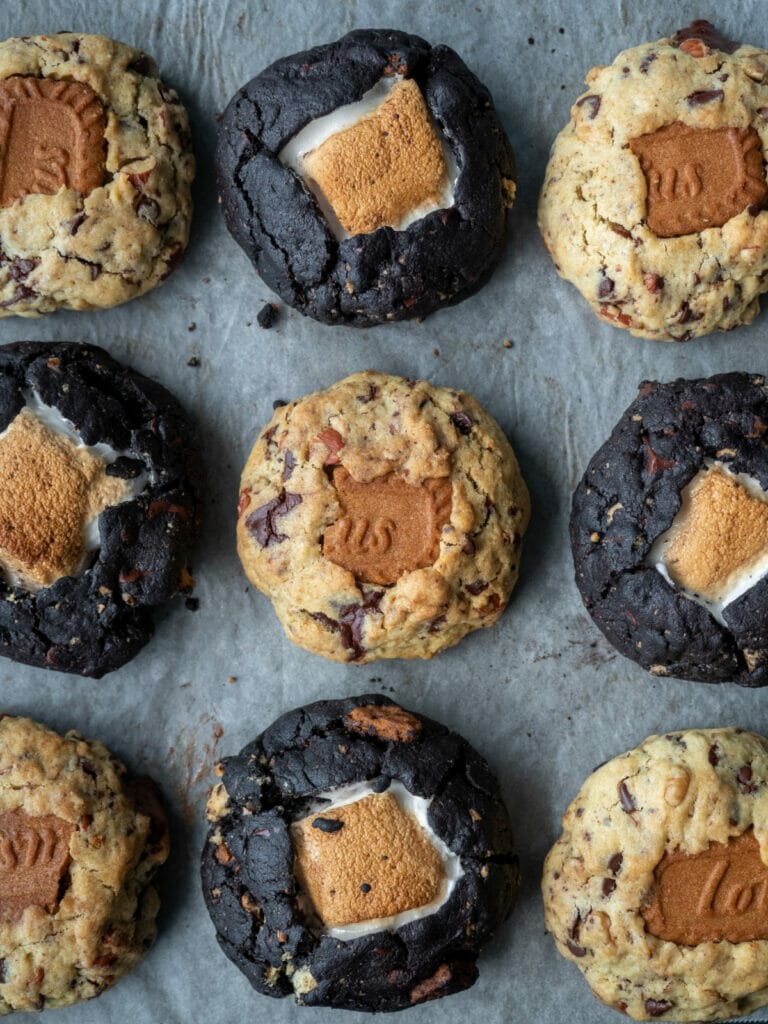
Our Favorite Quirky Kitchen Gadgets
- Select-A-Spice Auto-Measure Carousel – Get your exact spice amount without measuring spoons with this spice carousel. Simply twist the dial for a perfect 1/4 teaspoon measurement!
- Silicone Utensil Rest with Drip Pad – This utensil rest keeps my countertops neat & drip-free!
- Snap N Strain Pot Strainer and Pasta Strainer – I love this strainer because it fits on all pots and pans while also being compact and easy to use!
- Herb Scissors Set – I use these scissors to cut and mince fresh herbs directly into any dish without the tedious work of cutting each herb or dirtying up a cutting board.
- Knife Sharpener – I love how quirky and nifty this rhino shaped knife sharpener is. It definitely puts the FUN in functional!
What are cakey cookies?
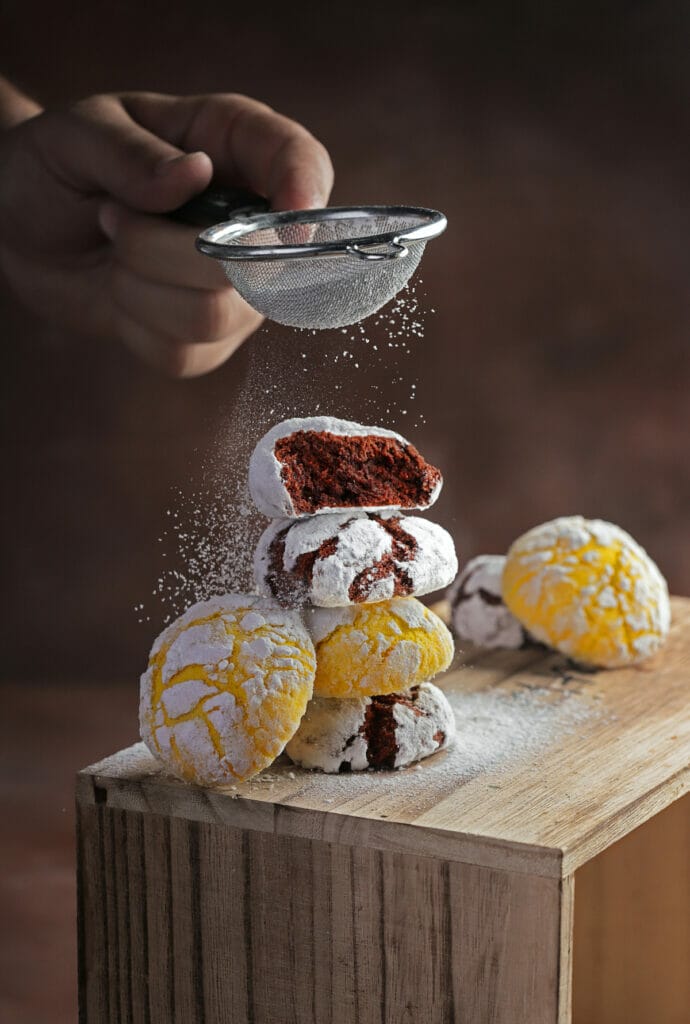
As discussed, a cakey cookie has a texture that’s much more similar to a cake than a cookie.
Cakey cookies are lighter, fluffier, and have a crumb that’s more spread out.
This is sometimes caused on purpose, like if you’re eating cake mix cookies, but often it’s a mistake caused by using the wrong ingredients or methods.
Your chocolate chip cookie, for instance, shouldn’t be light and fluffy, but deliciously chewy and melt-in-your-mouth (that’s another way to tell: cakey cookies don’t often melt in your mouth).
There are a few different causes, like using too much flour, too much baking powder, too many eggs, or overbeating the cookie dough as this creates more air pockets.
Here are some additional fixes to turn those cakey cookies into the right texture.
How to make your cookies less cakey

If you’re a baking guru, you’ll appreciate the more in-depth techniques in this guide, but if you just want a quick fix, we’ve got that for you too.
We wouldn’t recommend doing all of them at once (we know it’s tempting).
If you go too far in the opposite direction, you may end up with completely dense and rock hard cookies, and you won’t know which techniques worked or didn’t work for you.
Really, you should be trying them 1 technique at a time, starting with the ones that don’t involve changing the ingredients and then moving on, but if you don’t have the stamina to bake like 12 dozen cookies and test in your kitchen all day, choose just one technique involving the ingredients and one technique involving the baking/post-bake process and try those first.
1. After baking, drop the pan on the kitchen counter
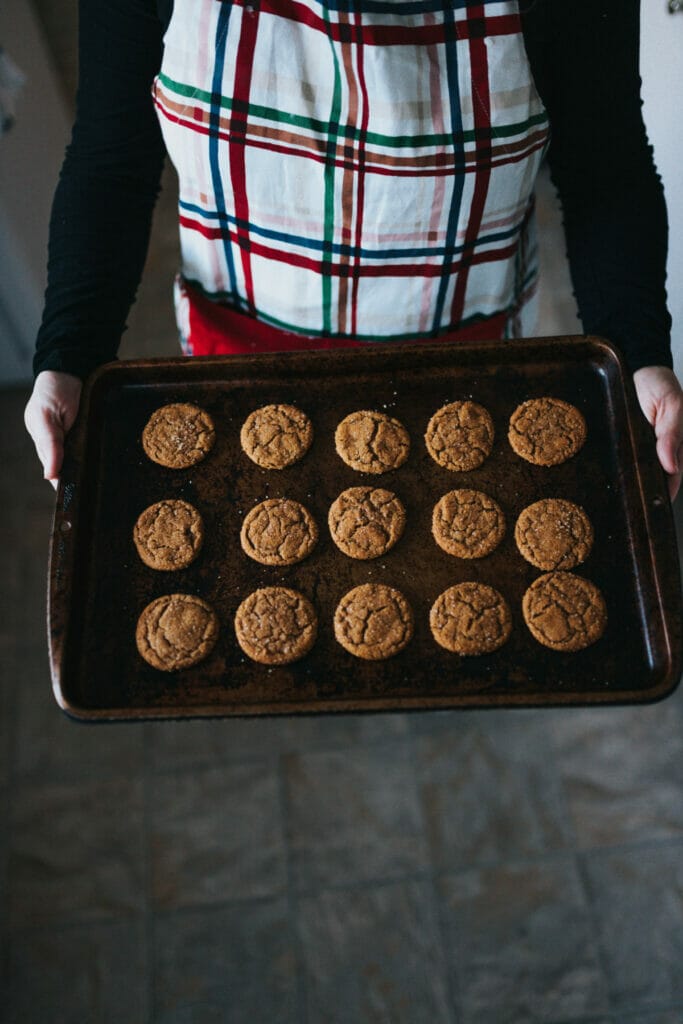
Yes, seriously.
You don’t have to do anything fancy for this method.
Once your cookies are done, take them out of the oven and bang the pan onto a cutting board on the counter (just to save your counter) two or three times.
This is going to make the puff in the cookies go down, forcing the cookies to compact which is going to help you get that dense chewiness that you want.
You don’t even have to forcefully throw it down if you don’t want.
Just drop the pan onto the cutting board a few times and watch as the cookies “settle” and wallah.
2. Try using melted butter
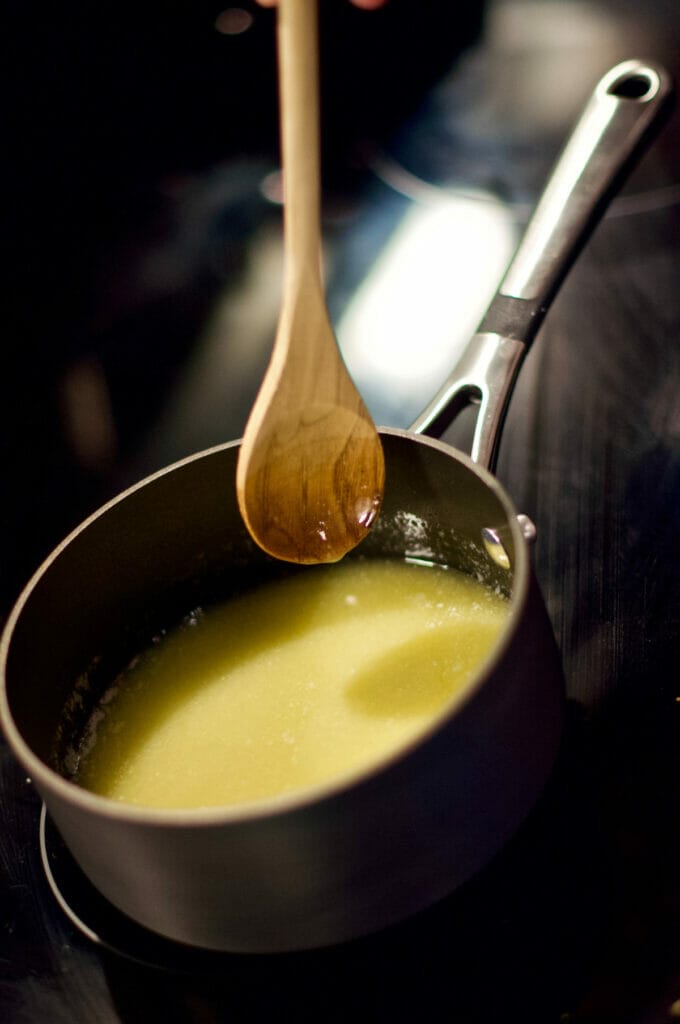
While we wouldn’t recommend this technique if your cookies aren’t turning out cakey, sometimes it can be a great fix for a cookie that is just consistently too cakey for your liking.
Melting butter is going to mean that you’ll end up with a flatter cookie since you’ve already pre-melted the fat.
In traditional cookie recipes, you often use room temperature butter and don’t pre-melt it, as it gives the cookie more structure.
Melted butter will lead to a more dense cookie, which may be the secret you need to not have those cakey cookies anymore.
3. Use baking soda
Baking soda helps give a cookie “spread” (I always remember ‘s’ for spread), which will lead to a chewier cookie and a bit more crispiness.
Try adding a tiny bit of baking soda to get rid of some of that cakeyness – 1/2 teaspoon is a great way to start.
If your recipe already has baking soda in it, then don’t add the full 1/2 teaspoon, but add just 1/4 teaspoon extra to see if that helps any.
4. Instead of shortening, use butter

Using shortening in baking is a great way to end up with more tender and cake-like cookies, so if that isn’t what you’re going for, stay away from the shortening.
Switch to butter for a melt-in-your-mouth kind of taste (you can do an equal 1:1 swap).
It’ll make your cookies dense and take away some of that fluff that makes them taste like cake.
5. Go easy on beating the sugar and butter
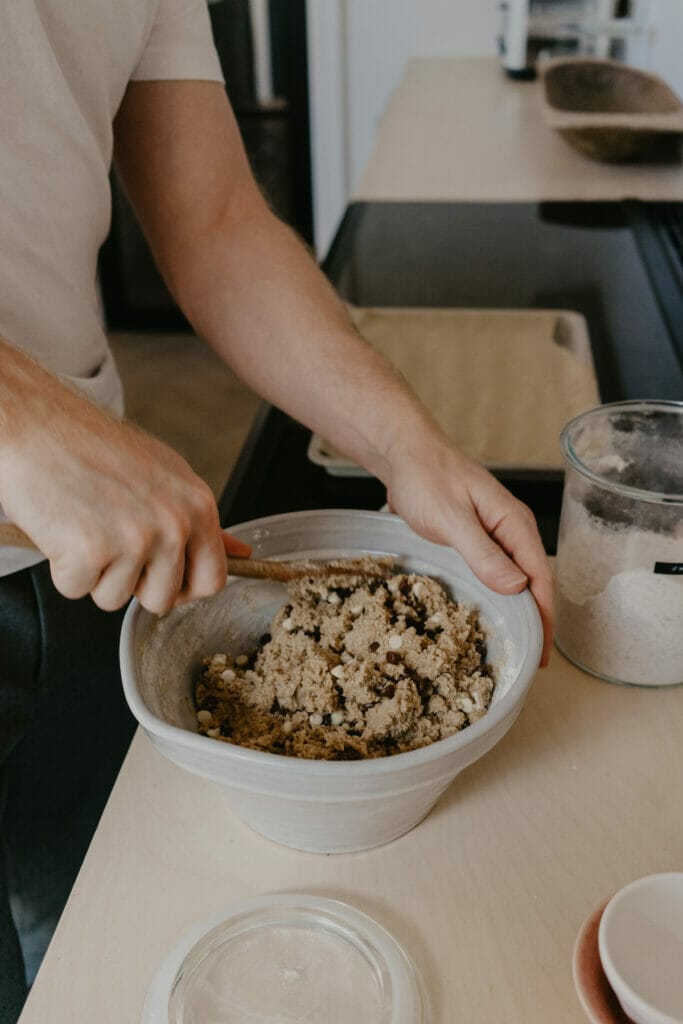
Overbeating the sugar and butter together can lead to too much air in the dough.
When you incorporate too much air in the dough, you’re going to end up with cakey cookies because the “crumb” is going to be more fluffy and spread out than the dense crumb of a cookie.
yes, you do need to cream the butter and sugar together, but just do it until they come together as one mixture and then stop.
Don’t continue beating until it becomes whippy or simply because you forgot you left your mixer on.
6. Avoid chilling your cookies

One of the cookie must-dos often seems to be chilling your cookies, and usually this is to help them retain their structure and puffiness in the oven so you get nice, rounded cookies instead of flat ones.
But if your cookies are coming out too cakey, then it’s time to buck some old baking trends and don’t chill the dough before baking.
This will mean that, when baking, the butter will actually melt faster (due to not be chilled), leading to a more dense cookie that could cut some of that cakeyness out.
7. Limit the amount of baking powder
Baking powder, the other rising agent in baking, can help you get puffy cookies (think of it like “p” = puffy).
You can end up getting soft cookies this way, which is great, but if your dough is going too much in the cake direction, take out some baking powder from the ingredients to help you make the cookies more dense.
We wouldn’t advise leaving it out completely.
Simply decrease by 1/4 teaspoon at a time in a few different batches until you see the results.
You do still need some sort of rising agent in your dough, so this is one to test with rather than to just delete the entire ingredient from the recipe.
6. Take out some flour
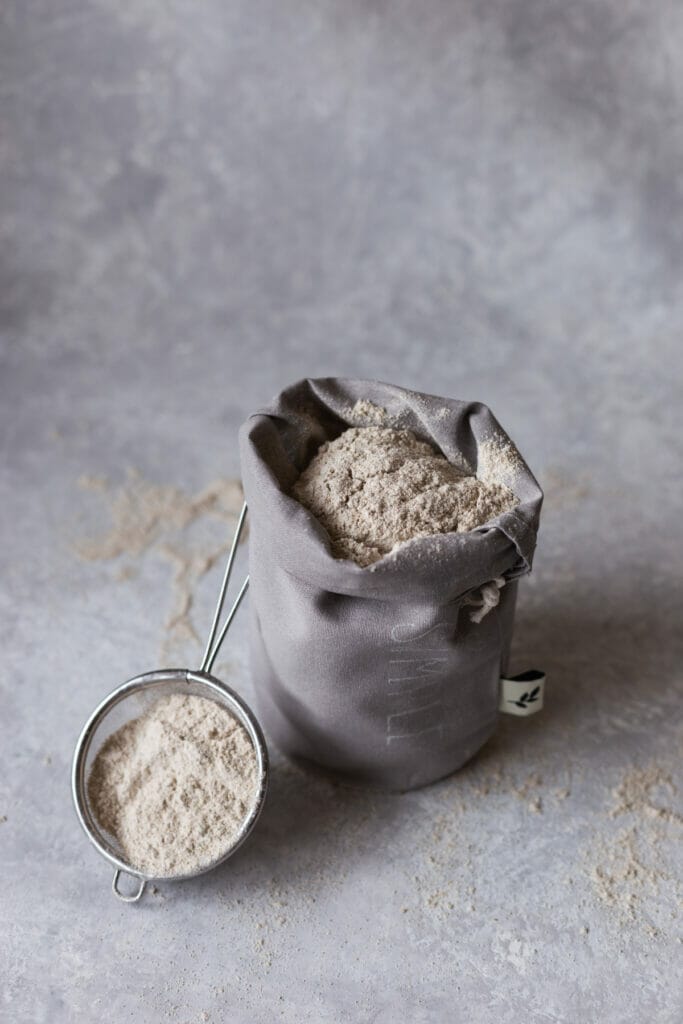
Flour is a necessary ingredient in cookies, but it can also cause cakey cookies if you’re not careful.
If you add too much flour, your cookies will hold their shape more and end up “fluffier” rather than chewy.
Remove about 1/8 cup of flour at a time if you think too much flour may be causing you cakey cookies (or just cookies that taste too much like flour!)
7. Limit the amount of eggs
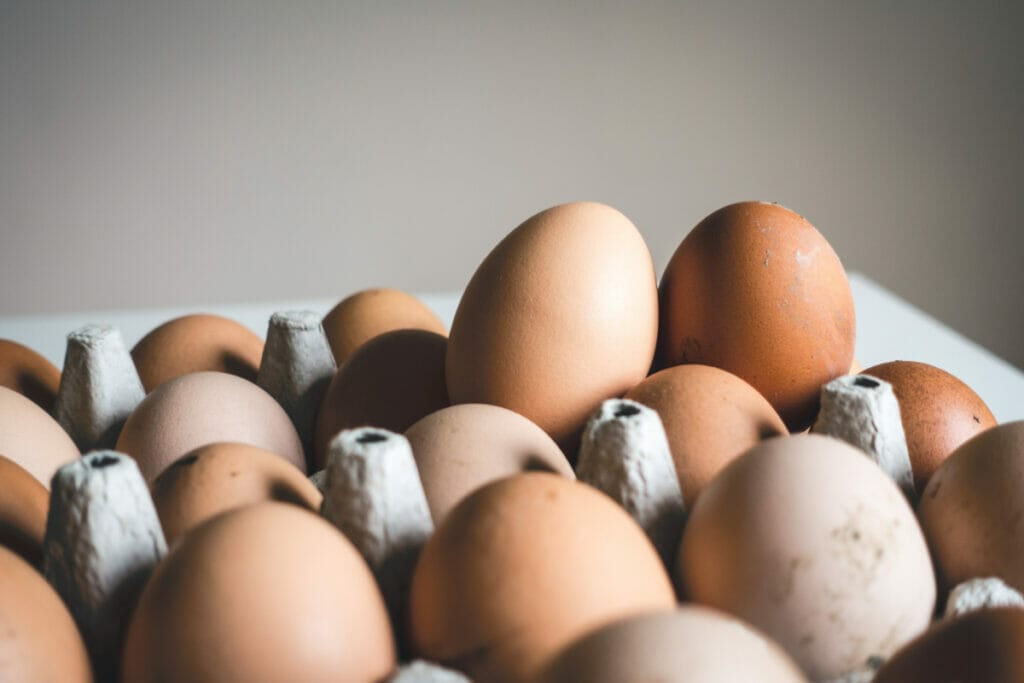
There’s one thing that often separates cookie and cake recipes, and that’s the amount of eggs!
Cakes tend to have more eggs in them, as eggs will help a cake have more rise and moistness.
The fewer eggs you use, the less of a cake-like texture you’ll have.
You don’t want to remove eggs completely because they are important for structure and moistness, but you can try cutting the amount of eggs by 1/4 or even just adding an egg yolk instead of the whole egg if your cookies call for one egg and continually turn out cakey.
Hey! Want more expert cookie baking hacks? Check these out!
- Exactly how long homemade cookies last
- Can you bake cookies on aluminum foil?
- 7 easy ways to soften hard cookies
- Oops! Burned cookies! Here are 9 ways to fix them
- Help! My cookie dough is crumbly!
- Why are my cookies burnt on the bottom?
- How long does cookie dough last?
- Tips on Making Your Cookies Chewier
- Exactly how to freeze your cookie dough
- The ultimate guide to chilling cookie dough
- Help! Too much butter in cookies: what to do!
- Tips on Making your Cookies Super Moist
- Exactly how to bake your frozen cookies
- Can you use salted butter in cookies?
- Expert cookie storage tips
- Help! I’m out of butter – can I still make cookies without butter?
- How to make cookies without vanilla extract
- Help! How to make cookies without brown sugar
- How to use cake flour in cookies
- Help! How do I make cookies without eggs?
- Can you make cookies without baking soda?
- Can you use bread flour in cookies?
- Exactly how to make cookies more puffy
- How to make cookies without baking powder
- How to fix wet and sticky cookie dough
